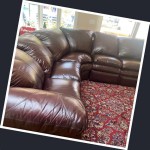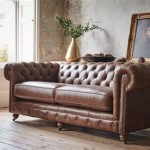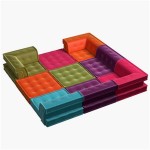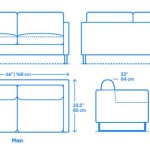French Provincial Furniture Sofas: A Comprehensive Overview
French Provincial furniture, also known as French Country furniture, evokes a sense of rustic elegance characteristic of the French countryside. This style, with its origins in the 17th and 18th centuries, offers a charming alternative to the more opulent designs of the French court. French Provincial sofas embody this aesthetic, providing both comfort and visual appeal to a variety of interior spaces.
The French Provincial style developed as a response to the elaborate and expensive furniture found in Versailles. Artisans in the French provinces sought to create pieces that reflected similar design principles but utilized locally sourced materials and simpler construction techniques. This resulted in a style that retained the elegance of French design while being more accessible and practical for everyday living. The emphasis was on comfort, durability, and a connection to nature, which is reflected in the materials and motifs used in French Provincial furniture.
French Provincial sofas are often characterized by their soft, rounded lines, carved details, and natural wood finishes. Upholstery choices typically include floral patterns, toile de Jouy, linen, and muted solid colors. These elements combine to create a sofa that is both inviting and aesthetically pleasing, blending seamlessly with a range of decorating styles, from classic to contemporary.
Defining Characteristics of French Provincial Sofas
Several key features distinguish French Provincial sofas from other furniture styles. Understanding these characteristics is crucial for identifying and appreciating the nuances of this design.
Frame and Construction: The frame of a French Provincial sofa is typically crafted from solid wood, often oak, beech, or fruitwood. These woods provide durability and a natural texture that complements the overall aesthetic. The frame is usually exposed, showcasing the natural grain and color of the wood. This exposed frame is often adorned with carved details, such as floral motifs, scrolls, or foliage, which add a touch of elegance and sophistication. The construction of the frame prioritizes longevity, ensuring that the sofa can withstand years of use. Mortise and tenon joints, along with other traditional woodworking techniques, are frequently employed to create a strong and stable structure.
Upholstery and Fabrics: The upholstery of a French Provincial sofa plays a significant role in defining its character. Fabrics commonly used include linen, cotton, toile de Jouy, and floral prints. Linen, with its natural texture and breathability, is a popular choice for its comfort and understated elegance. Cotton provides a softer feel and can be found in a variety of patterns and colors. Toile de Jouy, a distinctive French fabric featuring monochromatic scenes printed on a light background, is a hallmark of the French Provincial style. Floral prints, often depicting roses, lavender, and other botanical elements, add a touch of romance and charm. The colors used in the upholstery are typically muted and natural, reflecting the palette of the French countryside. Creams, beiges, grays, blues, and greens are common choices, creating a sense of tranquility and harmony.
Design and Detailing: The overall design of a French Provincial sofa is characterized by its soft, rounded lines and graceful curves. The arms of the sofa are often rolled or curved, adding to the sense of comfort and elegance. The back of the sofa may be tufted or upholstered with a single panel, depending on the specific design. The legs of the sofa are often cabriole legs, a classic French design featuring a curved shape that tapers towards the foot. The carved details on the frame, legs, and arms of the sofa are an integral part of the design, adding visual interest and sophistication. These details are often hand-carved, reflecting the craftsmanship and attention to detail that are characteristic of the French Provincial style. The proportions of the sofa are carefully considered to create a balanced and harmonious piece of furniture. The height, width, and depth of the sofa are designed to provide optimal comfort and support.
Materials Commonly Used in French Provincial Sofas
The selection of materials is paramount in determining the quality, durability, and aesthetic appeal of a French Provincial sofa. Artisans traditionally utilize specific materials to achieve the desired look and feel.
Wood Types: As previously stated, oak, beech, and fruitwood are frequently employed in the construction of the sofa frame. Oak is valued for its strength, durability, and distinctive grain pattern. Beech is a lighter-colored wood that is often used for its smooth texture and ease of carving. Fruitwood, such as cherry or walnut, offers a rich color and a fine grain, adding a touch of elegance to the furniture. The choice of wood will depend on the desired aesthetic and the specific requirements of the design. The wood is typically treated with a natural finish, such as beeswax or linseed oil, to enhance its natural beauty and protect it from damage.
Upholstery Fabrics: Linen, cotton, toile de Jouy, and floral prints are the most common upholstery fabrics. Linen is a natural fiber that is known for its durability, breathability, and resistance to wear and tear. Cotton is a softer and more affordable option that is available in a wide range of colors and patterns. Toile de Jouy is a distinctive French fabric that features monochromatic scenes printed on a light background. These scenes often depict pastoral landscapes, historical events, or mythological subjects. Floral prints, often featuring roses, lavender, and other botanical elements, add a touch of romance and charm to the sofa. The choice of fabric will depend on the desired aesthetic, the level of durability required, and the budget constraints of the buyer.
Stuffing and Padding: Historically, natural materials such as horsehair, feathers, and down were used for stuffing and padding in French Provincial sofas. These materials provided a comfortable and supportive seating surface. Modern French Provincial sofas may also use synthetic materials such as foam and fiberfill. Foam provides a consistent and durable cushioning, while fiberfill offers a softer and more plush feel. The choice of stuffing and padding will depend on the desired level of comfort and support, as well as the budget constraints of the buyer. The stuffing and padding are typically covered with a muslin or burlap lining to protect the upholstery fabric and provide a smooth surface.
Incorporating French Provincial Sofas into Interior Design
French Provincial sofas can be seamlessly integrated into various interior design styles, adding a touch of elegance and charm to any space. Their versatility makes them a popular choice for homeowners looking to create a warm and inviting atmosphere.
Complementary Color Palettes: When incorporating a French Provincial sofa into a room, it is important to consider the color palette. Muted and natural colors, such as creams, beiges, grays, blues, and greens, will complement the style of the sofa and create a harmonious atmosphere. These colors can be used on the walls, flooring, and other furniture pieces in the room. Accent colors, such as lavender, rose, or deep blue, can be used to add pops of color and visual interest. The key is to create a cohesive and balanced color scheme that reflects the overall aesthetic of the French Provincial style.
Accessorizing with French Country Elements: To enhance the French Provincial style, consider accessorizing with French Country elements such as wrought iron accents, antique mirrors, and floral arrangements. Wrought iron lamps, sconces, and chandeliers can add a touch of rustic elegance to the room. Antique mirrors with ornate frames can create a sense of depth and sophistication. Floral arrangements, featuring roses, lavender, and other botanical elements, can add a touch of romance and charm. Other decorative elements, such as vintage books, porcelain figurines, and woven baskets, can further enhance the French Provincial aesthetic. The key is to create a layered and textured space that feels both comfortable and stylish.
Mixing with Modern Pieces: French Provincial sofas can also be successfully mixed with modern pieces to create a unique and eclectic style. Pairing a French Provincial sofa with a contemporary coffee table or a modern art piece can create a striking contrast that is both visually appealing and intellectually stimulating. The key is to balance the traditional elements of the French Provincial style with the clean lines and minimalist aesthetic of modern design. This can be achieved by carefully selecting furniture pieces and accessories that complement each other in terms of color, texture, and form. The goal is to create a space that is both timeless and contemporary, reflecting the personality and taste of the homeowner.
French Provincial sofas are more than just pieces of furniture; they are statements of style and sophistication. Their enduring appeal lies in their ability to evoke a sense of comfort, elegance, and connection to the natural world. By understanding the defining characteristics, materials, and design principles of French Provincial sofas, one can appreciate their beauty and incorporate them effectively into a variety of interior spaces, creating a home that is both inviting and aesthetically pleasing.

French Provincial Carved Beige Leather Tufted Sofa Set

French Provincial Sofa 6331 W Gold Finish

French Provincial Sofa Collection Pl Romantic Baroque Sofas

Picasso French Style Oversized Sofa

Plushly Perfect Vintage French Sofa With Channeled And On Seat Back Casa Victoria Furniture Los Angeles Sunset Boulevard

634a Italian Jaquard Sofa Loveseat French Provincial Style By Polrey International Furnishing

Lot French Provincial Carved Walnut Sofa With A Pair Of Upholstered Fruitwood Bergere

French Country Sofa

French And Italian Style Seating Furniture Luxury Sofa Set

French Provincial Carved Beige Leather Tufted Sofa Set








